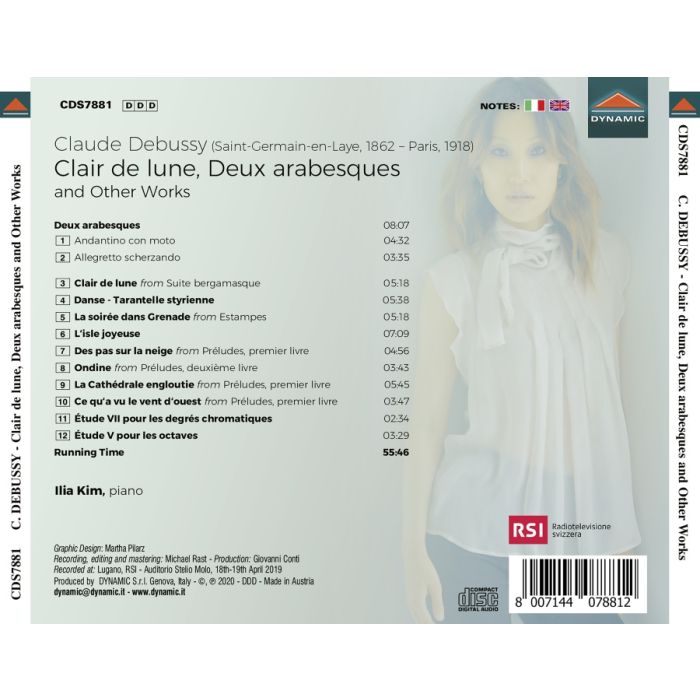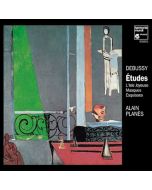
(Produkt nie został jeszcze oceniony)
kompozytor
Debussy, Claude
tytuł
Debussy: Clair de Lune; Arabesques
wykonawcy
Kim, Ilia
nr katalogowy
CDS 7881
opis
Claude Debussy is considered by today’s critics as one of the artists who mark the turning point between two great periods in music history: the romantic heritage of the nineteenth century and the modernity of the twentieth. At the beginning of his career Debussy was described as an impressionist, the musical equivalent of impressionism in figurative arts. This label was understandable, but because of his connections with Mallarmé and Maeterlinck it didn’t quite fit, to the extent that he would later rather be defined as a symbolist artist. Generally speaking, the symbolist movement is what best describes Debussy’s art. But the composer had created his first masterpiece, the cantata La Damoiselle élue on a text by Dante Gabriele Rossetti, the most eminent figure of the Pre-Raphaelite movement; and his last works had been contemporary, from both the chronological and spiritual point of view, to the beginning of the abstract movement initiated by Mondrian. In Debussy’s piano works we can find signs of this evolution which allow us to understand the several phases of his aesthetic, not only as an artist but also as a communicator in music, reflecting all the artistic fields from the 19th to the 20th century.
nośnik
CD x 1
wydawca
Dynamic
data wydania
6.07.2020
EAN / kod kreskowy
8007144078812
49,00 zł
Produkt na zamówienie
Wysyłka ustalana indywidualnie.
Darmowa wysyłka dla zamówień powyżej 300 zł!
Darmowy kurier dla zamówień powyżej 500 zł!
sprawdź koszty wysyłki









